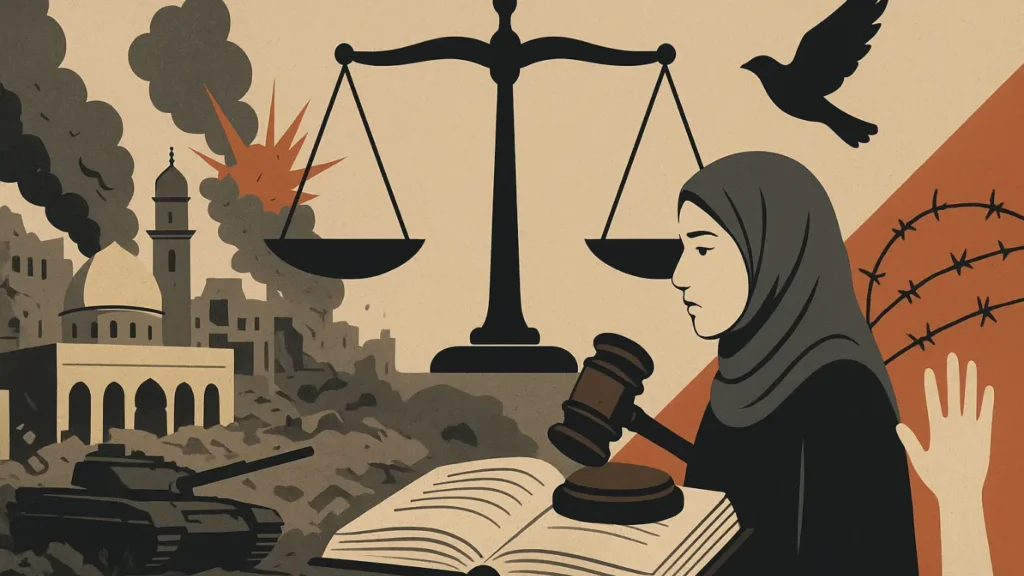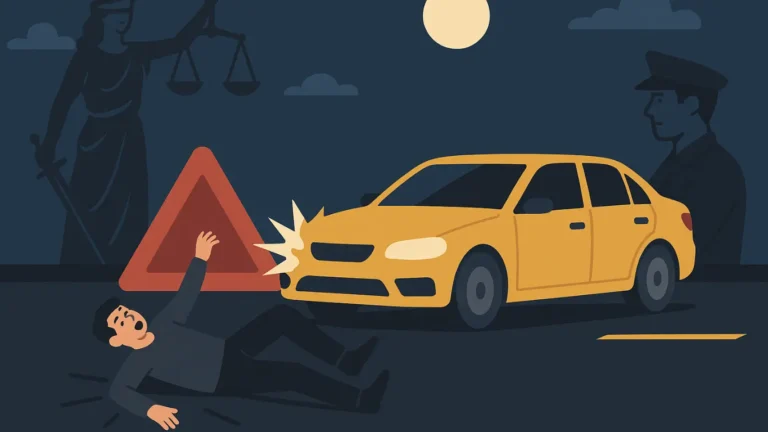
Background
Hamas is a Palestinian armed group and political movement in the Gaza Strip. On 7 October 2023 it attacked Israel, killing about 1,200 people and taking more than 250 hostages. This triggered a massive Israeli military offensive in Gaza, which has killed tens of thousands of Palestinians. Hamas, which the US, UK, Israel and many other nations have designated as a terrorist organisation, continued to fire rockets into Israel.
Hamas led the deadliest attack on Israel in its history, killing about 1,200 people, including more than 360 young people at a music festival. The unprecedented attack sent shockwaves across the country, as Hamas gunmen targeted border communities for hours and took hostages. Hamas has said it is a resistance movement. It has described the attack as a response to what it says are decades of Israeli oppression, the killings of Palestinians and years-long blockade of the Gaza Strip. Hamas has also said the attack was a reaction to what it claims are Israeli efforts to take over the al-Aqsa mosque compound in Jerusalem – Islam’s third holiest site. Hamas also wants the release of thousands of Palestinians in Israeli prisons.
All Palestinian factions and parties oppose Israel’s presence in the West Bank, as well as occupied East Jerusalem and the Gaza Strip. They want the land to be part of a future independent state, something backed by the vast majority of the international community. Israel’s occupation of the land and settlements it has built there are considered illegal by the UN’s top court. However, Israel’s current government does not recognise the right of the Palestinians to have their own state, arguing that it would be a security threat. It also claims the West Bank as part of a “Greater Israel”.
Israel launched a massive military offensive against Hamas in Gaza following the 7 October attack. It started with air strikes and was followed by a ground invasion. Israeli Prime Minister Benjamin Netanyahu said Israel’s aims included destroying Hamas, returning the hostages and making sure Israel cannot be threatened in future. The Israeli government also said it wanted tens of thousands of displaced Israelis to be able to return to their homes in northern Israel, near the border with Lebanon, following attacks by Hamas’s ally Hezbollah. More than 46,700 people in Gaza – mostly civilians, the majority of whom were women and children – have been killed in the fighting, according to the Hamas-run health ministry. The UN says most of the 2.3 million population have been forced from their homes and that there are “catastrophic” levels of food insecurity.
Both Israel and Hamas have been accused of committing war crimes and human rights abuses. The UN Human Rights Council says both sides have mounted attacks against civilian populations and are responsible for “murder or wilful killings”. Both have rejected the report’s findings. Israel has also been accused of genocide in a case brought by South Africa and taken to the UN’s top court, the International Court of Justice. Israel says the case is “wholly unfounded”. In January 2025, Israel and Hamas agreed a deal to halt the war and release Israeli hostages and Palestinian prisoners. The ceasefire deal also reached in January 2025 is intended to halt the fighting and to allow humanitarian assistance to reach people in Gaza.
Legal Issues
- Is the conflict classified as a Non-International Armed Conflict (NIAC), an International Armed Conflict (IAC), or both? What are the legal implications of each classification for the parties involved?
- Have all feasible precautions been taken to minimize civilian harm?
- To what extent is Hamas, as a non-state actor, bound by IHL and IHRL, particularly given its de facto control over Gaza?
Analysis
Classification between Israel-Hamas Conflict under International Humanitarian Law
As Israel launches its most recent military campaign (Operation Swords of Iron) after Hamas’ attacks on October 7 2023, international lawyers have been grappling with the character of this conflict. The distinction between international and non-international armed conflicts has been eroded somewhat; it remains one of significance in a number of ways. Importantly, whether Israel is the occupying power or not is central as the obligations incumbent on it would be greater compared to those applicable in an international armed conflict sans occupation. It would also mean that Israel does not possess the right to self-defence in a territory it occupies. It seems that there are two plausible theories for how this conflict can be classified; A non-international armed conflict and an international armed conflict.
IAC is a conflict that occurs between states, such as two or more states fighting each other. For example, the wars between the United States and Iraq, Argentina and Britain, and World Wars I and II. While NIAC is a conflict that occurs within the territory of the state (internal conflict), for example between the state and the belligerents or between the belligerents themselves. For example, the armed conflict in the Philippines between the government and the Moro Islamic Liberation Front, in Indonesia between the government and the belligerent of Free Aceh Movement. The scope of application of International Humanitarian law refers to Article 2 of the 1949 Geneva Conventions regarding concurrent provisions (provisions stipulated in conventions I, II, III, and IV or called common articles). The common articles cover three things:
- In addition to the provisions which shall be implemented in peacetime, the present Convention shall apply to all cases of declared war or of any other armed conflict which may arise between two or more of the High Contracting Parties, even if the state of war is not recognized by one of them.
- The Convention shall also apply to all cases of partial or total occupation of the territory of a High Contracting Party, even if the said occupation meets with no armed resistance.
- Although one of the Powers in conflict may not be a party to the present Convention, the Powers who are parties thereto shall remain bound by it in their mutual relations. They shall furthermore be bound by the Convention in relation to the said Power, if the latter accepts and applies the provisions thereof.
What about the classification of the armed conflict of Israel v. Hamas? Is the Israel-Hamas conflict an IAC or NIAC? Let’s break down what Hamas is and its status in International Law. Hamas is an Islamist group based in the Gaza Strip. The formation of Hamas was motivated by the dissatisfaction of some Palestinians with the diplomatic struggle of existing Palestinian resistance organizations, such as the Palestine Liberation Organization (“PLO”). Thus, Hamas is a group of freedom fighters who are fighting for their independence. So, the armed conflict between Israel and Hamas is a non-international armed conflict or NIAC. This is because Hamas is a non-state actor and its actions cannot be attributed to another state. Under this theory, there is no occupation of the Gaza strip after Israel disengaged in 2005 as its soldiers are not in that area on a permanent basis and therefore do not exercise ‘effective control’ (as per Art. 42 of the Hague Regulations 1907).
Baca juga: Presiden Menjadi Hakim Tertinggi dalam Penerapan Abolisi dan Amnesti Di Indonesia
However, the physical presence of permanent troops in occupied territory is not required to determine effective control. Boots on the ground are not required so long as the occupying power has the capacity to exercise it. As Distein (pages 301-02) states, “when an Occupying Power withdraws its land forces from part of an occupied territory but retains control over the airspace and the maritime areas, effective control need not automatically be looked upon as relinquished”. Israel’s maintenance of a blockade on the strip for the past 12 years plus its ability to lay siege to the territory, order evacuations, and control the goods that enter it, indicates that it remains in effective control of the territory. Furthermore, a simple NIAC classification is one that Israel’s own courts have shrugged off in favor of that applicable to IACs. This is despite acknowledging the armed conflict is between a state and a non-state actor. The fact that Israel is not simply using force against Hamas in its own territory but also in territory to which it has no sovereign title (the Gaza Strip) indicates that characterizing the conflict as non-international only is largely untenable.
Application of IHL Principles to Conduct of Hostilities
IHL, or the laws of war, has existed in some form for thousands of years, but the modern version is set out in the Geneva Conventions of 1949, alongside other treaties, and customary international law. It binds states, including Israel, as well as non-state armed groups that are involved in conflict, including Hamas and Islamic Jihad, even though they cannot formally ratify the treaties. It is important to say that the rules of law are non-reciprocal, meaning that they apply irrespective of what the other side has done. Violations – such as deliberately targeting civilians or imposing collective punishment – can never be justified by claiming that another party has committed violations, or that there are power imbalances or other injustices.
The laws of war only apply in specific situations, notably during an armed conflict or an occupation. Other laws, particularly international human rights law, apply at all times, governing the duties of all states to protect the rights of the people in the territory where they have jurisdiction or a degree of control. International humanitarian law governs the conduct of hostilities and is distinct from the law that governs the decision to use force. Whatever the legality of a decision to use force, all parties must comply with IHL. This body of law also governs occupation when a state has effective control, without consent, of a territory over which it has no sovereign title, such as the Israeli occupation of Palestinian territory.
Israel has been occupying the West Bank, including East Jerusalem, and Gaza, which collectively constitute the Occupied Palestinian Territory (OPT), since 1967. Contrary to what the Israeli government claims, Israel’s withdrawal of its ground forces from Gaza in 2005 did not end its occupation of Gaza. That is because, ever since, Israel has maintained effective control over Gaza, including its territorial waters and airspace, the movement of people and goods, except at Gaza’s border with Egypt, and the infrastructure upon which Gaza relies, rendering the Strip an open-air prison.
Under IHL, Israel is required, as the occupying power, to make sure that the basic needs of the population of Gaza, such as food and water, are met. International human rights law also governs the legal duties of the Israeli authorities towards the population of the OPT, especially given the long duration of the occupation. In addition, Hamas, and the Palestinian Authority, which are de facto governing authorities over many Palestinians, have responsibilities to protect the human rights of the population they govern. Their functions do not negate Israel’s duties as the occupying power.
Since the first attack that Hamas had launched on October, 7 2023, multiple war crimes have been and continue to be committed in Israel and Palestine, with grave concerns that Israeli forces and Palestinian armed groups are carrying out unlawful indiscriminate attacks harming civilians. On 26 May 2024, two Israeli air strikes on the Kuwaiti Peace Camp, a makeshift camp for internally displaced people (IDP) in Tal al-Sultan in west Rafah, killed at least 36 people – including six children – and injured more than 100. At least four of those killed were fighters. The air strikes, which targeted two Hamas commanders staying amid displaced civilians, consisted of two US-made GBU-39 guided bombs. The use of these munitions, which project deadly fragments over a wide area, in a camp housing civilians in overcrowded temporary shelters likely constituted a disproportionate and indiscriminate attack, and should be investigated as a war crime.
On 28 May 2024, in the second incident investigated, the Israeli military fired at least three tank shells at a location in the al-Mawasi area of Rafah which was designated by the Israeli military as a “humanitarian zone”. The strikes killed 23 civilians – including 12 children, seven women and four men – and injured many more. The apparent targets of the attack were one Hamas and one Islamic Jihad fighter. This strike, which failed to distinguish between civilians and military objectives by using unguided munitions in an area full of civilians sheltering in tents, likely was indiscriminate and should be investigated as a war crime. The United Nations said that nearly 1,400 people have been killed since the end of May while seeking food; 859 in the vicinity of sites run by the US-backed Gaza Humanitarian Foundation (GHF) and 514 along the routes of food convoys. The UN said that “most of the killings were committed by the Israeli military.”
The concentration of civilians in small areas of Gaza has been exacerbated by the successive waves of mass displacement, coupled with Israel’s ongoing illegal blockade that restricts the movement of people seeking safety outside Gaza. These conditions make it all the more important that the parties to the conflict strictly adhere to the rules of international humanitarian law which aim to protect civilians from the effects of military operations. The presence of military objectives does not absolve Israeli forces of their obligations under international humanitarian law, including their duty to respect the principles of distinction and proportionality, as well as their obligation to take all feasible precautions to spare civilians. The principle of distinction, a fundamental principle of international humanitarian law, requires parties to distinguish at all times between military objectives and civilians or civilian objects, and to direct their attacks only at military objectives.
The obligation of international actors to ensure compliance with and implementation of international law is clear. The United States and many other nations have committed to the responsibility to protect civilians from grave crimes across any borders, using diplomatic, humanitarian, and possibly military measures. The Leahy Law prohibits the United States from providing military or security assistance to any country that is blocking the provision of U.S. humanitarian assistance. To fulfill its obligations, U.S. leaders should continue pressuring Israel to limit its violence and allow humanitarian access. The U.S. refusal to veto the ceasefire resolution at the UN Security Council (after multiple earlier vetoes) should send a signal that Israel cannot avoid its international legal obligations forever.
The UN Security Council’s resolution demands Israel as well as Hamas to fulfill their obligations under IHL and international human rights law. As a state party to the Genocide Convention, as well as the occupying power with full practical power over Gaza, Israel is obliged to follow the clear provisional orders of the International Court of Justice, as well as the negative and positive requirements of international humanitarian law and human rights law. Complying with those obligations could provide a necessary transition to the eventual rebuilding of Gaza, an effort that will require immense global diplomatic and practical support.
Legal Obligations of Both Parties After Ceasefire
On Sunday 19 January, at 11:15 am local time, a ceasefire entered into effect in Gaza and Israel, bringing to a halt over 15 months of hostilities which have left tens of thousands dead, many more injured, and vast swathes of the Gaza Strip reduced to rubble. While international attention is focused on whether the fragile ceasefire will hold, the parties to the conflict as well as third States remain bound to respect crucial obligations under international law.
For one, the parties must ensure that humanitarian assistance at scale reaches those in need. The over 2,400 aid trucks that were reportedly allowed to enter Gaza between 19 and 21 January are a start, but much more is needed to reverse the ongoing humanitarian catastrophe throughout the Strip, especially in the north, where Israel has imposed a crippling siege from October 2024. Those in need of medical treatment must be cared for and, if necessary, evacuated to third countries; this is essential given the destruction of healthcare facilities in much of Gaza. Unsafe conditions preventing the return of the around 1.9 million displaced Gazans to their homes must be remedied.
Further to Sunday’s release of 90 Palestinian detainees and three Israeli hostages, and additional releases planned for Saturday 25 January, the parties to the conflict must bring all unlawful deprivations of liberty to an end, ensure the humane treatment of those who remain in detention, and allow visits by the International Committee of the Red Cross (ICRC). The parties must account for the missing, including the thousands of Palestinians in Gaza feared to be trapped under the rubble. Gravesites must be protected, and the dead treated with dignity.
The parties must also begin the long process of reconstruction in southern Israel and Gaza. The United Nations (UN) has estimated that just removing the more than 50 million tonnes of debris from the enclave may take up to 21 years; rebuilding destroyed residential homes could take many more decades. Unexploded ordnance presents continuing danger even when the fighting has stopped and must be cleared away.
Third States must take all measures reasonably available to them to ensure that all ongoing violations of international law are brought to an end. Failure to do so only stands to further erode respect for the norms and institutions set up after the Second World War, with calamitous implications extending far beyond the Israeli Palestinian context.
Conclusion
The Israel-Hamas conflict profoundly challenges the international legal order. It highlights extensive allegations of grave violations of International Humanitarian Law (IHL) and International Human Rights Law (IHRL) by all parties. Regardless of the conflict’s precise classification, both Israel, as a state and potential occupying power, and Hamas, as a non-state armed group, are unequivocally bound by fundamental IHL principles: distinction, proportionality, and precaution. Analysis reveals numerous instances where these principles appear disregarded, leading to catastrophic civilian harm and a severe humanitarian crisis. Allegations of war crimes and potential crimes against humanity against both belligerents necessitate rigorous investigation and robust accountability. The ongoing proceedings at the ICC and ICJ underscore the international community’s imperative to address these atrocities and uphold justice.
However, significant impediments to accountability persist, including jurisdictional complexities, evidence collection challenges, and political influences, risking impunity and undermining international law. This conflict serves as a critical test for IHL’s resilience and applicability in modern warfare. A failure to ensure compliance risks eroding the foundational norms designed to protect humanity, with far-reaching implications for global order. Therefore, strict adherence to IHL/IHRL, unimpeded humanitarian access, impartial accountability, and robust international support for reconstruction are paramount to upholding the integrity of international law.




